Welcome to FISH FOOD TIMES
Feb. 2025 issue No.254

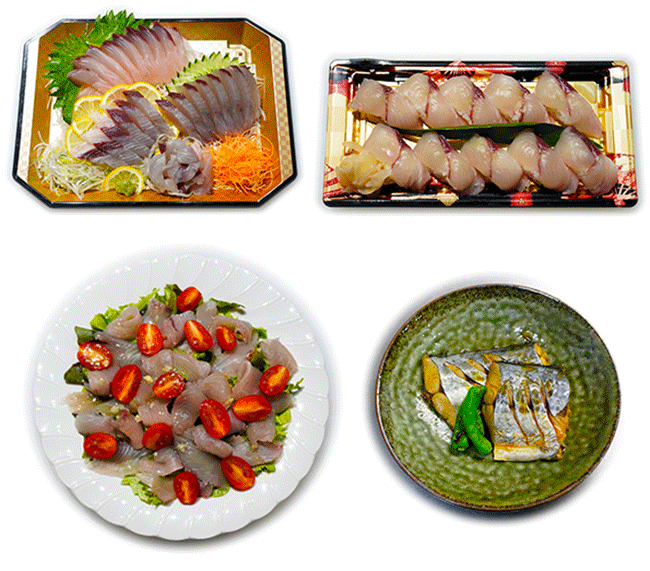
Spanish mackerel "New ver."
Looking back now, it's so embarrassing
Spanish mackerel, which I have decided to feature in this month's issue, was originally featured in an article 19 years ago, in the February 2006 issue, with the theme "spanish mackerel seared sashimi". However, looking back at what I wrote in that article now, I can only say that it is quite embarrassing. At the time, I had been creating my own website without any help for three years, but there were still many things I didn't understand, and I was constantly going through trial and error, which I think is one of the reasons for this.
Furthermore, I was still unclear about the extent to which I was willing to share the knowledge and skills I had accumulated up to that point. I had basically been making product suggestions and the like to the seafood retail industry by posting images and making a few comments, but I remember at the time I had a strong feeling that I didn't want to go any deeper and do anything that would be like disclosing my know-how.
That's why I didn't want to write about anything beyond the content at that time, and ended up with such a low level and meager content. Looking back now, about 20 years later, I feel that such a narrow-minded perspective has led to my own devaluation, and I feel extremely embarrassed.
In order to take this opportunity to dispel such embarrassing feelings, I would like to pack this month's issue with as much knowledge about Spanish mackerel as I can, and make it something that will satisfy all of our readers, at least to some extent.
Genuine spanish mackerel
This month's issue deals with a spanish mackerel called Genuine spanish mackerel. The fish is characterized by its elongated body and relatively narrow abdomen. The image below shows a spanish mackerel weighing about 1.2kg, which is not large for a spanish mackerel. When it is smaller than 1kg, it is called sagoshi, and since it is not very fatty, the trading price is usually quite low at this size.

There are several kinds of fish called spanish mackerel, and I have handled Yokoshima spanish mackerel and Camas spanish mackerel many times in the past, so I understand the difference between them and spanish mackerel. However, Yokoshima spanish mackerel and Camas spanish are not clearly distinguished in the seafood retail industry, and both are generally called Okisawara (I would like to use the Hawaiian name Wahoo for the English name).
The image below shows a Yokoshima spanish mackerel that was caught off the coast of Okinawa, weighing in at over 10kg. It is not possible to compare the sizes in these images, but it is over eight times the size of the spanish mackerel in the image above, making it extremely large.

The Yokoshima spanish mackerel is called Yamainu (mountain dog) in the areas facing the Genkai Sea, such as Fukuoka Prefecture, Nagasaki Prefecture, and Yamaguchi Prefecture, and I have long wondered why a fish has been given such a name. The answer I have come up with so far is that this fish is carnivorous and has a voracious appetite, even as a juvenile, so that it will bite fish of the same size as itself, and furthermore, it has a large mouth lined with sharp teeth, which is why I imagine it was given the name Yamainu (mountain dog). On the other hand, the Genuine spanish mackerel also seems to have a similar voracious appetite, but perhaps due to the difference in its face, it does not seem to be called by a wild-like fish name like mountain dog anywhere in the country.
White Red-fleshed fish
Both spanish mackerel and Wahoo belong to the mackerel family, so they are related to tuna and bonito, and although the flesh under the skin looks whitish, it is actually a red-fleshed fish.
The reason is that fish are classified as red-fleshed or white-fleshed fish not by the color of their flesh but by the amount of chromoproteins they contain. Chromoproteins are colored proteins such as hemoglobin in blood and myoglobin in muscles. If the amount of chromoproteins is more than 10 mg per 100 g, the fish is classified as red-fleshed fish, and if it is less than that, it is classified as white-fleshed fish. Since spanish mackerel has more than 10 mg, it is classified as a red-fleshed fish. By the way, salmon meat is red because it contains astaxanthin, a type of carotenoid pigment that has antioxidant and anti-aging effects. For this reason, although the flesh of salmon is red, the amount of pigmented protein is less than 10 mg, making it a white fish.
I think that spanish mackerel is a delicious fish no matter how it is cooked, and I think the reason I feel that way is because, although it has a relatively soft texture and is similar in color to white-fleshed fish, its flesh contains 10.8g of fat per 100g.
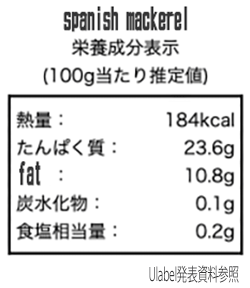
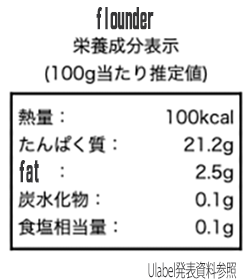
For comparison, the fat content of flounder, a typical white fish, is 2.5g per 100g, and spanish mackerel has more than four times the fat content of flounder. Some people may think that this is true because it is a comparison between white-fleshed fish and red-fleshed fish, so if we compare spanish mackerel with bluefin tuna, the fat content is 8.7g.
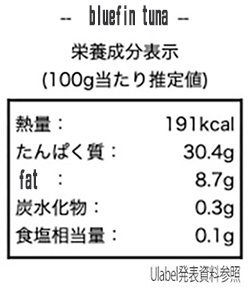
This is a surprising figure when comparing spanish mackerel with bluefin tuna, a representative red-fleshed fish related to the same Scombridae family, known for its fatty meat such as otoro and chutoro. The figure of 8.7g of fat for bluefin tuna varies greatly depending on the actual size of the bluefin tuna measured and which part of the tuna was used. Therefore, since these figures are omitted here, the accuracy in the strict sense is aside, but what I want you to pay attention to is the high fat content of spanish mackerel.
This figure shows that red-fleshed fish such as mackerel and sardines generally have a fat content of over 10%, and spanish mackerel is no exception to this rule. In addition, spanish mackerel has soft fish meat that is easy to break apart, just like other red-fleshed fish. However, the biggest difference between spanish mackerel and other red-fleshed fish is that the color of its fish meat is white and elegant, just like white-fleshed fish.
Basically, when judging whether a red-fleshed fish is fatty or not, it is common knowledge in fish retailers that "if the red-fleshed fish is whitish in color, and if the whiteness is noticeable, it is fatty." In particular, when it comes to winter yellowtail and winter mackerel, you can immediately make a rough judgment by looking at them in three pieces disassembling. From this perspective, it is not inconceivable that in the case of spanish mackerel, a phenomenon similar to bleaching due to fat has become a normal occurrence, which means that spanish mackerel is a fatty and delicious fish.
Spanish mackerel commercialization
Well, that's all for the introduction in terms of knowledge about spanish mackerel, and below I'll give some technical tips on how to sell this fish called spanish mackerel, which is delicious in any dish. I want to do it.
The first step is to commercialize the bone-in fillets.
| Spanish mackerel bone-in fillet processing process | |
|---|---|
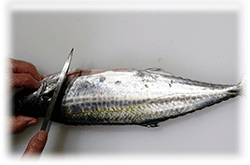 |
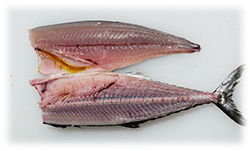 |
1�CUsing the tasukiotoshi technique, make an incision at an oblique angle next to the pectoral fin of the lower body. |
6�CState of two pieces disassembling. |
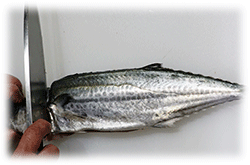 |
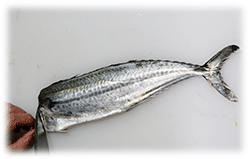 |
2�CFor the upper body, make a straight cut next to the head side of the pectoral fin and separate the head using the kiriotoshi technique. |
7�CSeparate the pectoral, dorsal, and anal fins, and trim the collar of the fish to a neat shape. |
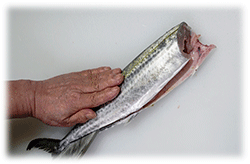 |
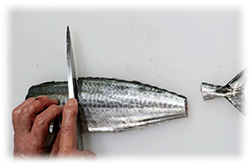 |
3�CMake an incision near the anal fin on the lower body, then cut above the central bone towards the backbone. |
8�CCut off a slightly larger piece of the tail fin and cut it into a fillet-sized piece on the head side. |
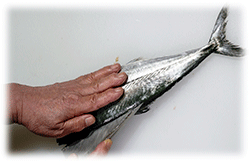 |
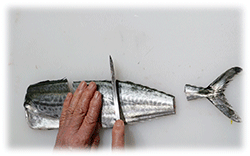 |
4�CMake an incision near the dorsal fin on the lower body, then cut above the central bone towards the backbone. |
9�CAdjust the length and cut the fillets so that they are divided into 3 equal parts in terms of weight. |
.gif) |
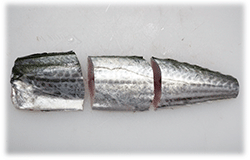 |
5�CCut over the backbone from the tail side to the head side and separate the lower body. |
10�CConsidering the weight balance of the fillets, they are divided into three pieces with the tail end being slightly longer. |
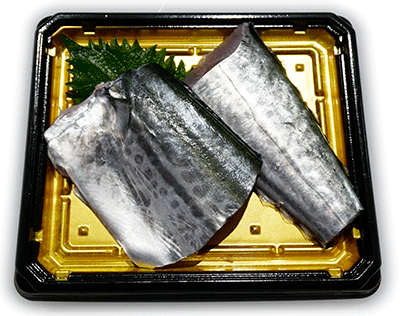 |
|
A product that prioritizes volume by removing the middle fillet and placing the head and tail fillets together. |
|
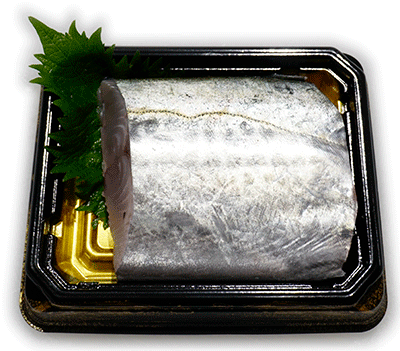 |
|
The middle fillet has the best shape among the three fillets, and is a product that emphasizes its visual value. |
|
If these fillets are boiled, they will look like this:
| Spanish mackerel simmering process |
|---|
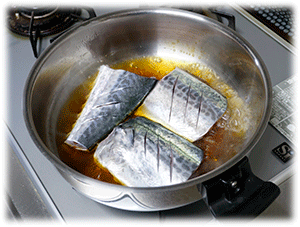 |
1�CBring the broth to a boil and add the Spanish mackerel slices. |
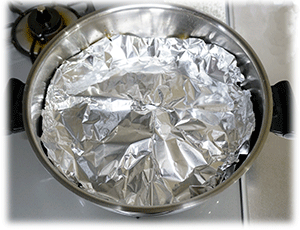 |
2�CCover with aluminum foil and bring to a boil. |
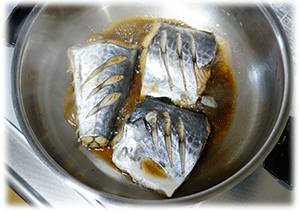 |
3�CPour the broth over the fillet from time to time to season it all over. |
.gif) |
Spanish mackerel boiled fish is completed |
Spanish mackerel has soft flesh that falls apart easily when boiled, so it is said to be unsuitable for boiling. However, that may be the case if there is no centralbone, but if the centralbone is still attached like this, you can boil fish without any problems. Therefore, you probably don't need to worry about such information.
If you sell boneless spanish mackerel fillets, we recommend wrapping the tray in film as shown below and then placing the boneless spanish mackerel fillets on top. This is useful because the thin boneless fillets do not sink to the bottom of the tray and the fillets do not move around.
| Various boneless spanish mackerel fillets |
|---|
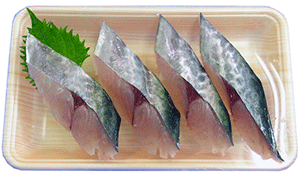 |
Spanish mackerel fillet for frying |
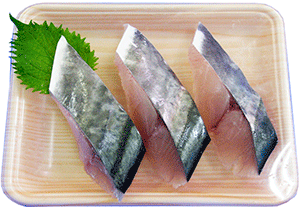 |
Spanish mackerel fillet for fried tatsuta |
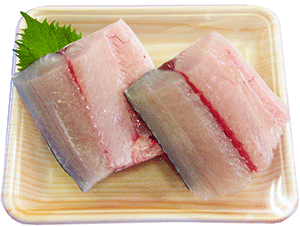 |
Spanish mackerel fillets for meunière |
As mentioned above, one of the characteristics of spanish mackerel is its soft flesh, but its skin is also soft. Moreover, its skin is relatively thin and it does not have as much subcutaneous fat as other blue fish, so it is difficult to peel off the skin by hand like horse mackerel, sardine, mackerel, and saury. For this reason, when removing the skin of spanish mackerel with a knife, there is a high possibility that the skin will break during the process, so it requires more care than other fish to peel the skin, and in order to complete the task well, you need to get used to doing it many times.
Also, perhaps because it is a red-fleshed fish, the color of chiai meat changes relatively quickly, so if the skin is removed, the appearance of the product deteriorates rapidly. For this reason, spanish mackerel is one of the fish that are easily discounted in the fish section, and salespeople often want to avoid selling it as a skinless product.
For this reason, many spanish mackerel products have seared skin, as shown in the image below. Of course, searing the skin makes it fragrant and delicious, so this is probably the main reason why it is popular not only with fish sales staff but also with customers.
| Seared spanish mackerel sashimi and sushi | |
|---|---|
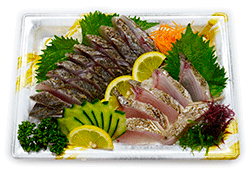 |
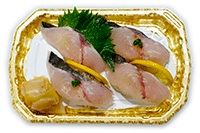 |
Spanish mackerel seared hiratsukuri sashimi |
Spanish mackerel Seared nigiri-sushi |
Skinless spanish mackerel commercialized
However, on the other hand, the fact that there are almost no products that do not use the skin of spanish mackerel is a bit of a downside when it comes to treating this delicious fish. Regarding this month's issue, I want to try again in order to recover from the stigma of cutting corners 20 years ago, so I would like to focus on the commercialization of spanish mackerel without the skin.
First is the process of peeling the spanish mackerel using the uchibiki technique.
| Spanish mackerel peeling using the uchibiki technique | |
|---|---|
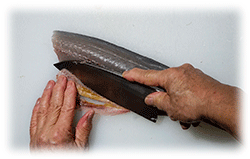 |
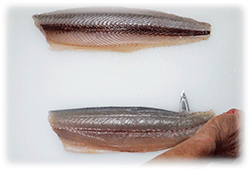 |
1�CRemove the belly bones from both the upper and lower body. |
4�CThe skin on the lower body is also removed using uchibiki. |
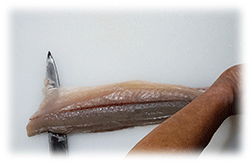 |
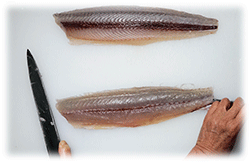 |
2�CThe skin of the upper body is peeled off with an inner pull. |
5�CMove the yanagiba knife back and forth while cutting towards the head and removing the skin. |
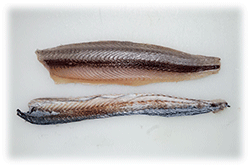 |
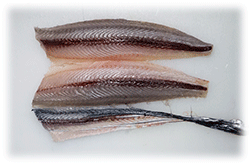 |
3�CA state in which the skin of the upper body has been removed. |
6�CThe skin of the upper and lower bohy of the fish has been removed using the uchibiki technique. |
It has been said above that the skinning of Spanish mackerel is done using the uchibiki technique, and the reason for this is that when the edge of the yanagiba blade is inserted between the skin and the flesh, with the uchibiki technique the edge of the blade makes a blunt angle and is soft when it comes into contact with the skin, so there is less risk of the skin breaking in the process than with the sotobiki technique.
There are two main types of fish skinning techniques: sotobiki and uchibiki.
The uchibiki technique can be used for: (1) fish with thin and soft skin, (2) fish with small bodies, (3) fish with a lot of subcutaneous fat like bluefish, and (4) saku-shaped or a quarter, which is a large fish divided into small parts with skin. This is a useful technique in such cases.
And the sotobiki technique is as follows.
(1) A fish whose skin is inherently hard and the skin cannot be cut even if you move the knife with some force; (2) A fish whose body is so large that you have to move your right arm a lot to hold the yanagiba on the cutting board, which requires a lot of physical strength. , �B When you want to leave the pattern under the skin as clean as possible after peeling, resulting in a product with a better finish.
The fish salesperson must use both the uchibiki and sotobiki techniques depending on the type of fish and the condition of the cuts from whole fish. However, what I often see in the field is that no matter what kind of fish it is, there are people who only try to use one technique that they are good at. This results in them acquiring only a slightly distorted and biased technique, which is unfortunate in terms of the ability to apply it when working with fish.
Now, if you are going to use the skinned Spanish mackerel as a raw ingredient, it is recommended to use both the head and tail parts separately. This is because the Spanish mackerel has very thick and long chiai bones, which are only present in the first third of the head, whereas the tail has no chiai bones at all in the first two-thirds of the tail.
Furthermore, when the chiai bone on the head side is pulled out, the back and belly naturally separate, making it impossible to commercialize the fish with the back and belly still attached. Therefore, it is necessary to insert the knife separately into the back and belly of the head after removing the skin. For example, if you use it as an ingredient in a carpaccio salad as shown below, it is easy because you do not need to cut the cut flesh neatly.
| Carpaccio salad using the head side of spanish mackerel | |
|---|---|
 |
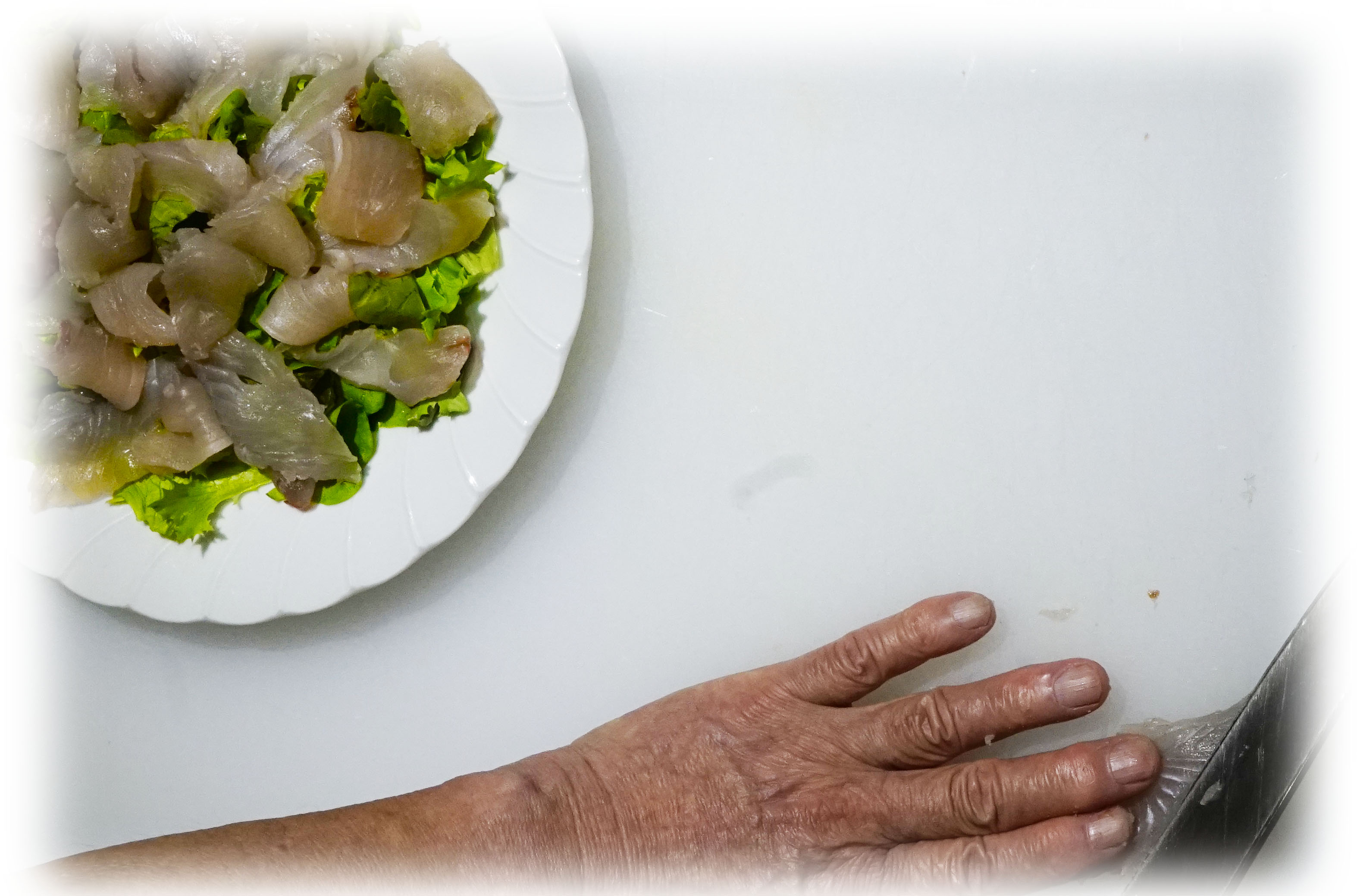 |
1,Separate the head side where chiai bone exists and the caudal side where chiai bone does not exist. |
�R�CScatter sliced spanish mackerel over the vegetables. |
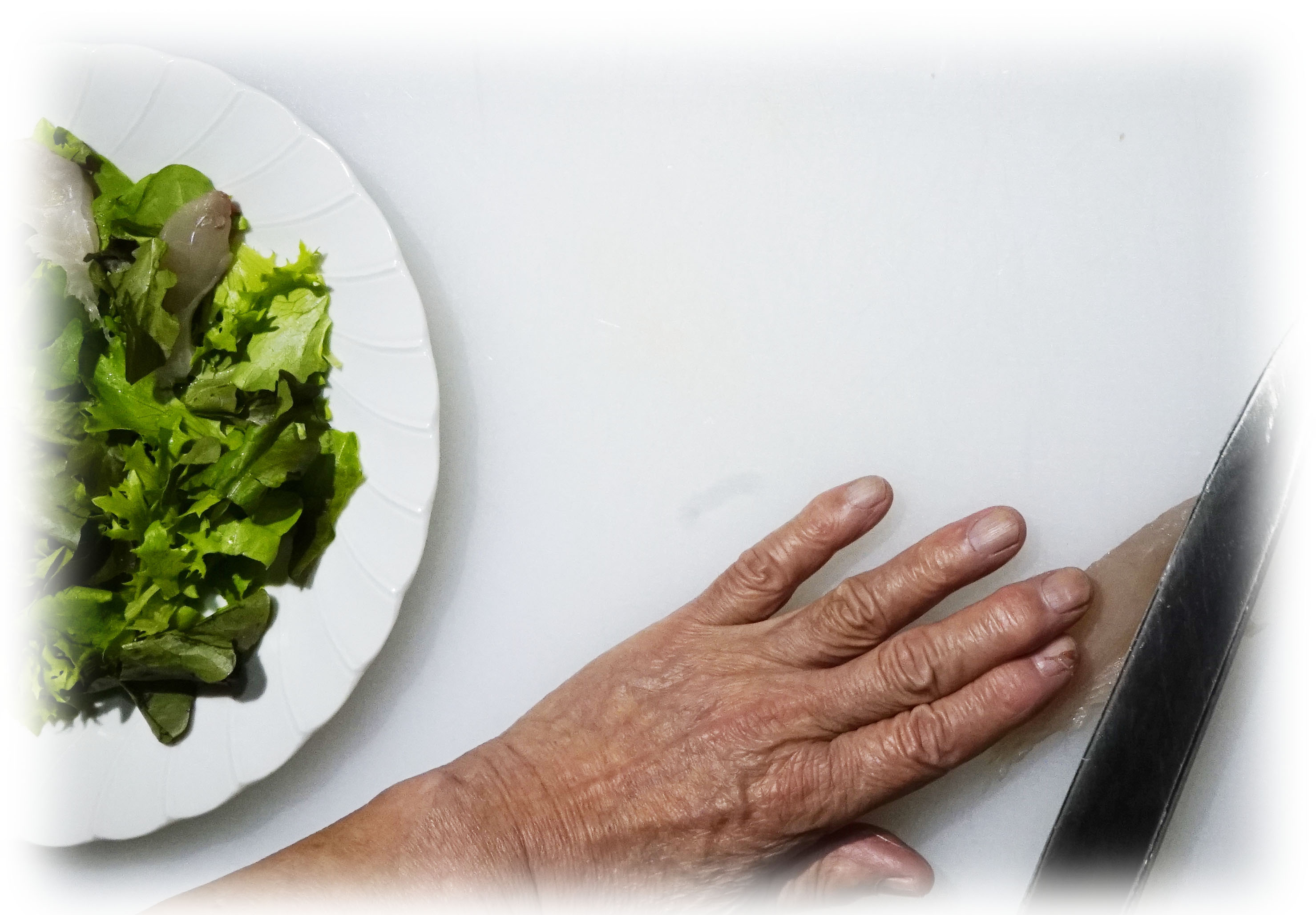 |
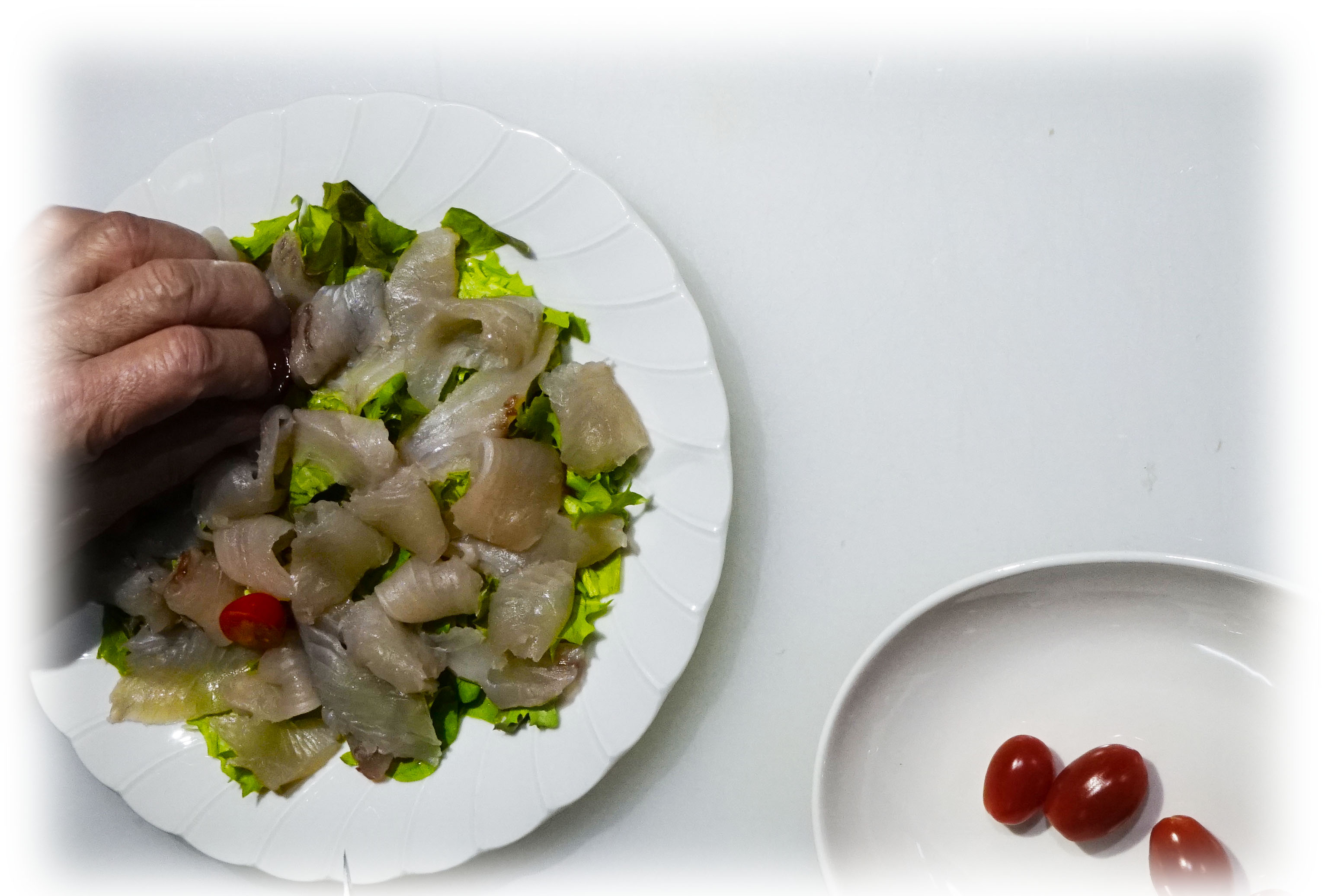 |
�Q�CPrepare vegetables such as baby leaves in a container, separate the back and belly, and slice the meat from the head side into thin pieces for salad. |
�S�CSplit cherry tomatoes in half lengthwise and top evenly over the whole thing. |
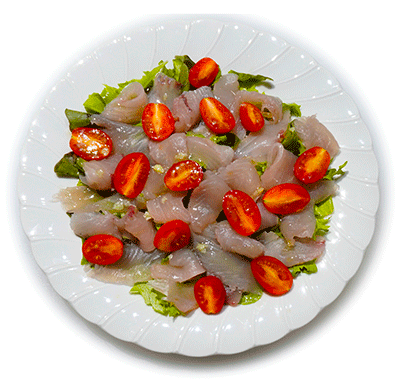 |
|
Spanish mackerel carpaccio salad is completed with carpaccio dressing. |
|
On the other hand, what to do with the tail side? Since there is no chiai bone, it can be commercialized with the back and belly meat attached. In this case, the author decided to cut one part in that shape and make it into sushi topping, and split the other part vertically to commercialize sashimi hiratsukuri.
| Sashimi and sushi made with spanish mackerel caudal side | |
|---|---|
Spanish mackerel nigiri sushi |
Spanish mackerel hiratsukuri sashimi |
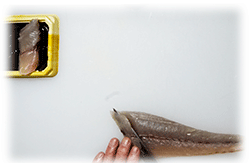 |
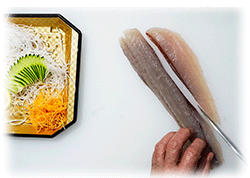 |
�P�CIn a left stance, cut all the way to the edge of the lower body surface. |
1�CSeparate the back and belly, keeping in mind that the shape of the back is a rectangle with even width. |
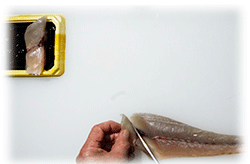 |
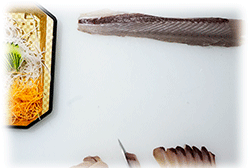 |
�Q�CWhen the cutting edge reaches the surface of the lower body, raise the spine of the knife straight. |
2�CFirst, prepare the belly meat into hiratsukuri sashimi and arrange it on top. |
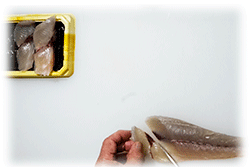 |
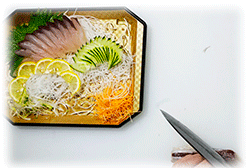 |
�R�CWhile keeping the spine of the Yanagiba blade upright, pull the tip towards you to separate it. |
3�CCut the back of the fish into sashimi slices and arrange into two piles. |
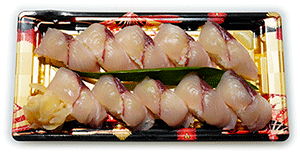 |
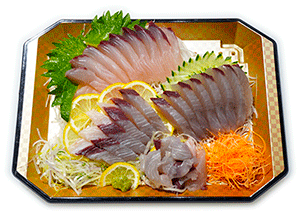 |
Spanish mackerel nigiri sushi (10 pieces) |
By using the cut edges of the saku to make sure they are not wasted, the spanish mackerel hirazukuri sashimi is complete. |
Keeping in mind that Spanish mackerel is a fish with soft flesh, the disadvantage of its softness can be covered by cutting it into hiratsukuri instead of usutsukuri for sashimi. Also, the suhidane for nigiri sushi should be cut a little thicker rather than too thin, which makes it taste better.
Regional characteristics �� positioning of spanish mackerel
Last year, something memorable happened to me about Spanish mackerel, so I would like to close this month's issue with something related to that. The following is something that readers who read FISH FOOD TIMES every month will think, ``Ah, that's about that article...''
The author traveled to Yamagata Prefecture in October of last year and described my experience at the local cuisine restaurant "Syunaji Izutu" in Sakata City in the November issue of FISH FOOD TIMES as follows:
�E�E�EThe owner-manager would talk to me from time to time so I never got bored. There was one interesting thing that I remember from that story. Okayama Prefecture is by far the most famous place for Spanish mackerel nationwide, but it is also a familiar fish that is often caught in the Genkai Sea off Fukuoka Prefecture. This fish, which is abundant in the waters of western Japan, has now started to be caught in large quantities in the Tohoku waters of eastern Japan. I, too, would like to accept this fact as a phenomenon of environmental changes in the ocean. Spanish mackerel, which enjoys benefits in terms of procurement, was used both as an appetizer and as a sashimi platter on this day. I heard that Spanish mackerel sashimi is aged for several days before being seared. The portion served as an appetizer was marinated in miso and grilled. Because of this extra effort, I felt that the Spanish mackerel, which is a typical representative of delicious fish, had an even greater presence in terms of flavor�E�E�E. |
In this way, what the store owner told me is backed up by the locational relationships in the diagram and materials below.
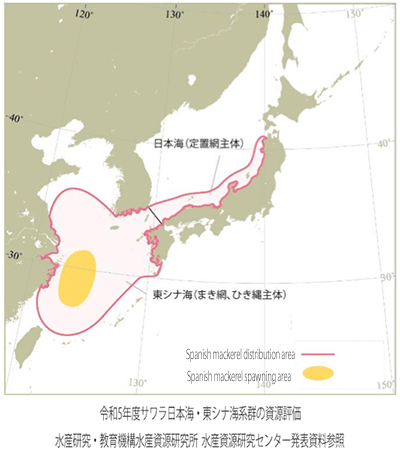
The Fisheries Resources Research Center of the Fisheries Research and Education Agency of Japan has published a report titled "Resource Assessment of the Sea of apan and East China Sea Stocks of Spanish Mackerel in 2023." According to this report, the catch volume of spanish mackerel varied between 17,000 and 45,000 tons in the 1980s, but dropped sharply in the 1990s, dropping to 822 tons in 1997. However, the catch volume has since started to increase, and has remained at around 10,000 tons since 2006, with the average catch volume over the past five years (2018-2022) being 9,252 tons.
As you can see from the graph above, trends in China and Korea have a large influence on the catch of spanish mackerel. The annual catch of spanish mackerel, including recent years, is around 350,000 tons in China and around 30,000 tons in Korea, so the figures are in different orders of magnitude.
In Japan, fishing for spanish mackerel using large and medium-sized purse seines that go to fishing grounds in the East China Sea has declined, and the catch of spanish mackerel using fixed nets seems to be stable.This means that fresh spanish mackerel will continue to arrive stably in the future. It seems safe to assume that there is a possibility that this will happen.
By the way, the diagram below shows the distribution area of the Seto Inland Sea population of spanish mackerel.
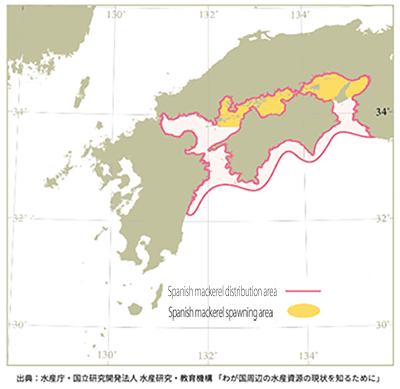
Okayama prefecture, which faces the Seto Inland Sea, is famous as the area in Japan where most people eat Spanish mackerel. This is because Okayama prefecture has a history of catching and eating large amounts of Spanish mackerel, which come to the Seto Inland Sea in the spring to spawn.
However, even in the Seto Inland Sea, the catch of Spanish mackerel dropped dramatically from 15,718 tons in 1987 to 199 tons in 1998. In response to this decline in Spanish mackerel resources, efforts such as voluntary autumn fishing closures and the release of seedlings have led to an increase in catches. However, the catch volume remains at a maximum of just over 2,000 tons per year.
In other words, Japan's current catch of Spanish mackerel is estimated to be around 12,000 tons, including the 10,000 tons of the East China Sea stock.
I cannot judge whether the actual amount of resources and catches of Spanish mackerel are insufficient to meet the demand for Spanish mackerel in Japan. However, if it is expected that the Spanish mackerel will continue to be caught steadily at least 10,000 tons per year in the future, I feel that this is a good thing.
Spanish mackerel is one of the delicious fishes, and I hope it continues to satisfy the stomachs of Japanese people.
An opinion and the communication are to iinfo@fish food times
Date of updating 1 Feb. 2025
